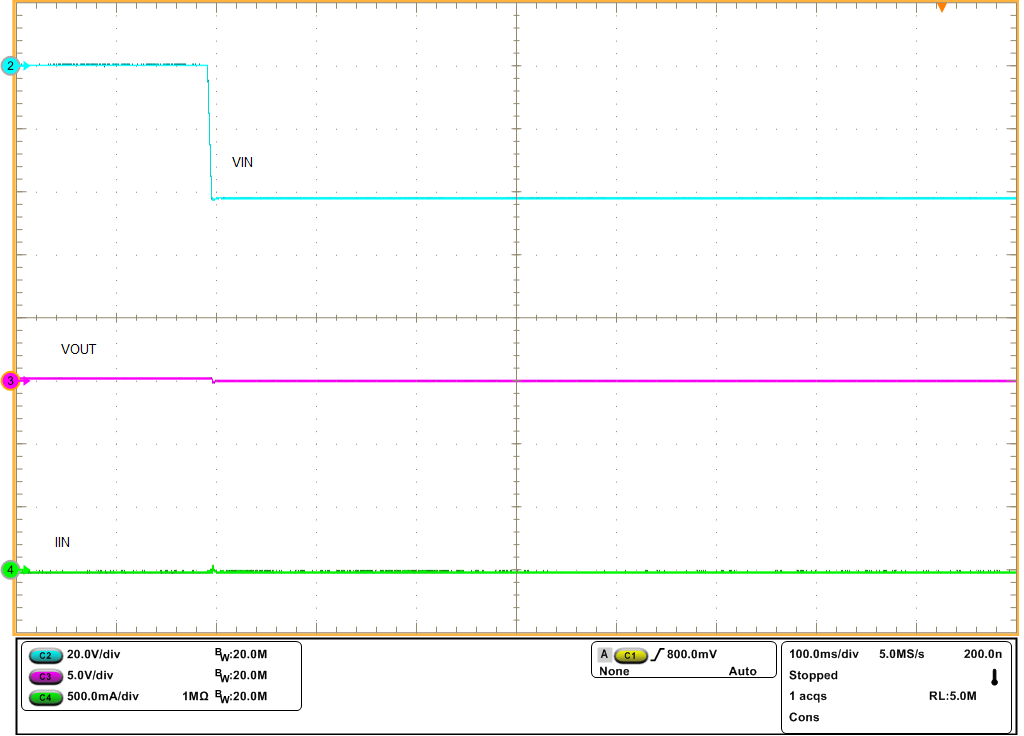SLVSFQ6A November 2020 – June 2021 TPS2640
PRODUCTION DATA
- 1 Features
- 2 Applications
- 3 Description
- 4 Revision History
- 5 Device Comparison
- 6 Pin Configuration and Functions
- 7 Specifications
- 8 Parameter Measurement Information
-
9 Detailed Description
- 9.1 Overview
- 9.2 Functional Block Diagram
- 9.3
Feature Description
- 9.3.1 Undervoltage Lockout (UVLO)
- 9.3.2 Overvoltage Protection (OVP)
- 9.3.3 Reverse Input Supply Protection
- 9.3.4 Hot Plug-In and In-Rush Current Control
- 9.3.5 Overload and Short Circuit Protection
- 9.4 Device Functional Modes
-
10Application and Implementation
- 10.1 Application Information
- 10.2 Typical Application
- 10.3 System Examples
- 10.4 Do's and Dont's
- 11Power Supply Recommendations
- 12Layout
- 13Device and Documentation Support
- 14Mechanical, Packaging, and Orderable Information
Package Options
Mechanical Data (Package|Pins)
Thermal pad, mechanical data (Package|Pins)
- PWP|16
Orderable Information
9.3.3 Reverse Input Supply Protection
To protect the electronic systems from reverse input supply due to miswiring, often a power component like a schottky diode is added in series with the supply line as shown in Figure 9-4. These additional discretes result in a lossy and bulky protection solution. The TPS26400 devices feature fully integrated reverse input supply protection and does not need an additional diode. These devices can withstand –42 V reverse voltage without damage. Figure 9-5 illustrates the reverse input polarity protection functionality.
 Figure 9-4 Reverse Input Supply
Protection Circuits - Discrete vs TPS26400
Figure 9-4 Reverse Input Supply
Protection Circuits - Discrete vs TPS26400 Figure 9-5 Reverse Input Supply
Protection at –42 V
Figure 9-5 Reverse Input Supply
Protection at –42 V